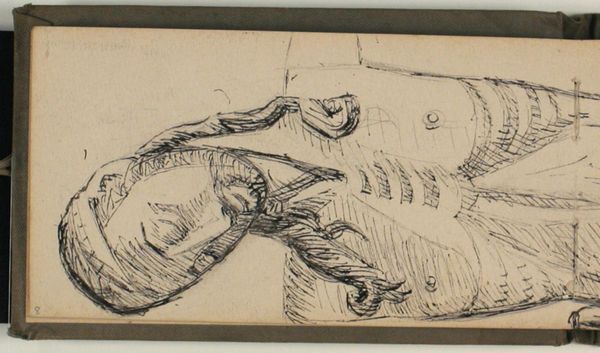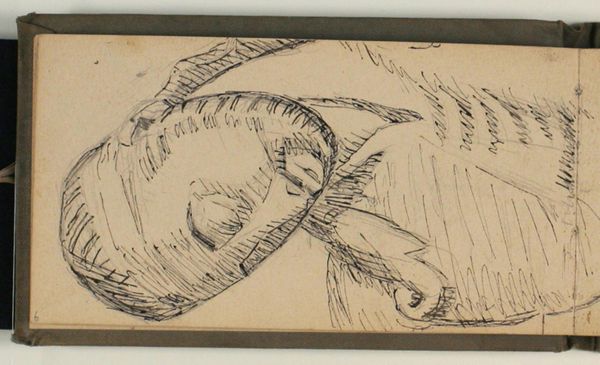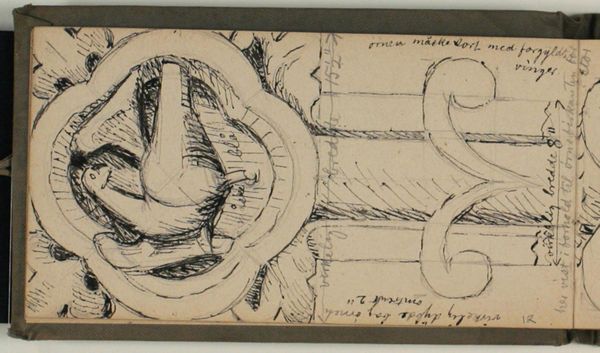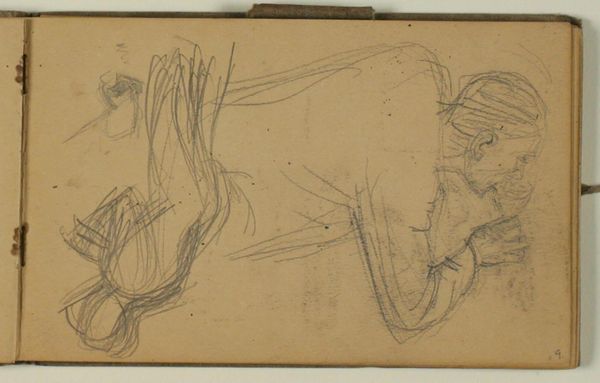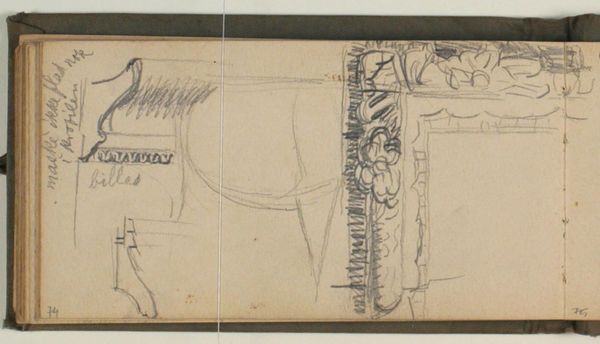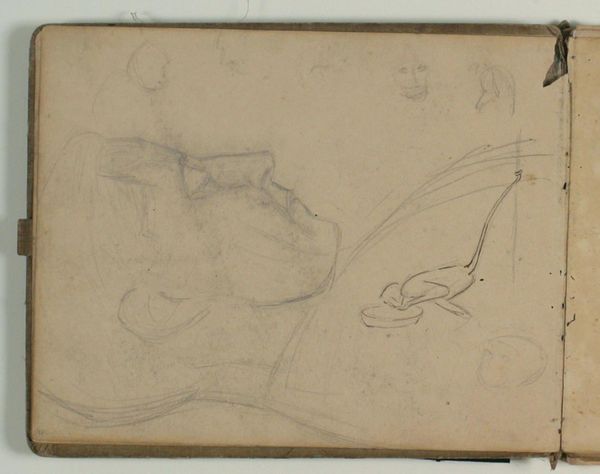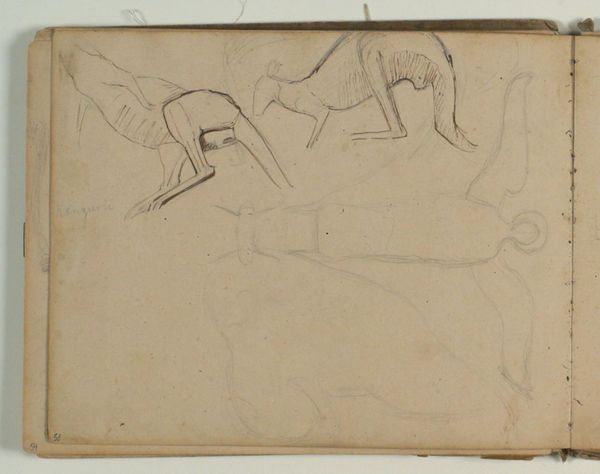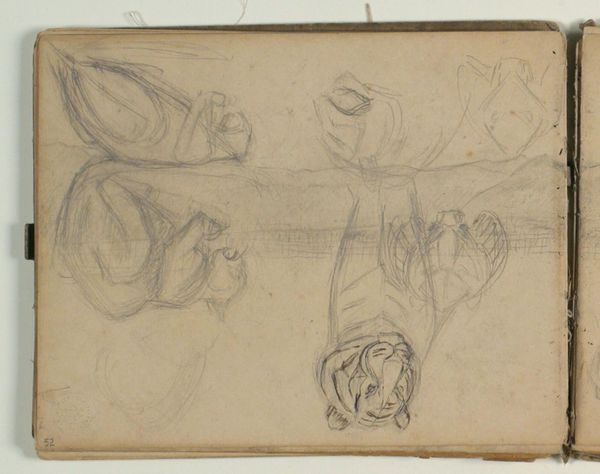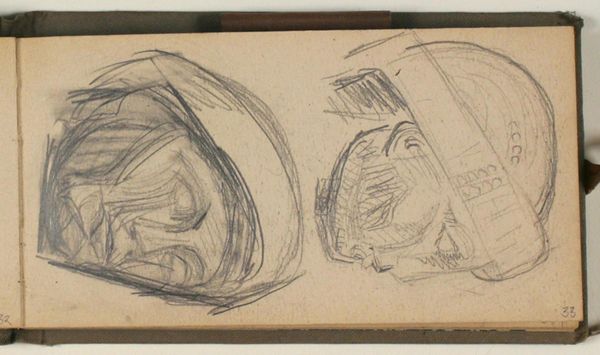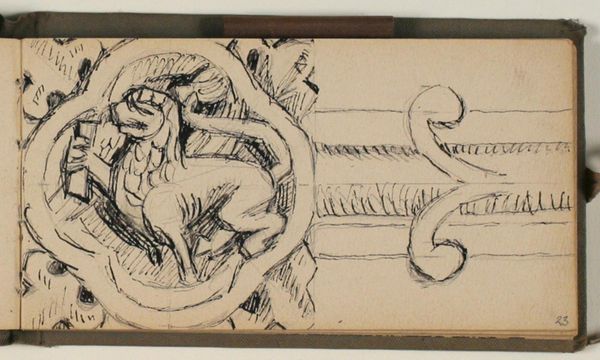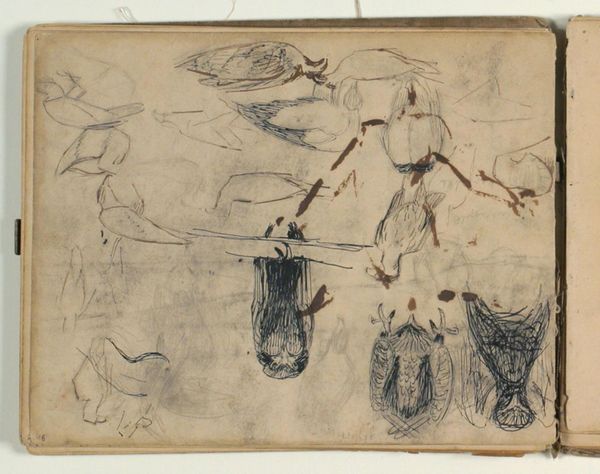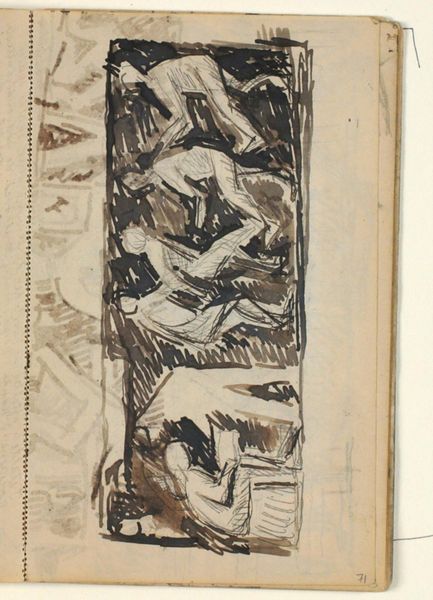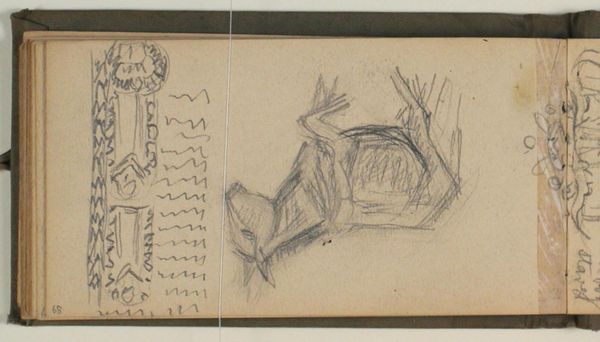
Studie af firpas for enden af korsarm på Egebjerg-krucifixet. Firpasset viser oksen, Lukas' evangelistsymbol 1919
0:00
0:00
drawing, ink, pencil
#
drawing
#
medieval
#
figuration
#
ink
#
coloured pencil
#
pencil
#
history-painting
Dimensions: 92 mm (height) x 174 mm (width) (bladmaal)
Curator: This is a study by Niels Larsen Stevns, created in 1919. The work, rendered in pencil and ink, depicts a quatrefoil—specifically, his study of the quatrefoil at the end of the cross arm on the Egebjerg crucifix. The quatrefoil here features the ox, symbol of St. Luke the Evangelist. Editor: There's a sense of something unfinished here; a process laid bare. The materiality speaks of sketching, practice...the tools of the artist laid plain. Curator: Absolutely. This isn't the final crucifix itself, but the labour involved, the steps to production, if you will. Larsen Stevns is engaging with material culture across centuries here. He’s documenting it, dissecting the artistry and skill involved, making visible these legacies and materials. The sketchbook itself becomes a critical space to contemplate process and production. Editor: It speaks to a renewed interest in the medieval within modern art, I think. Not just replicating forms, but really interrogating them through drawing. We see a close examination of religious and cultural history. How that intersects with identity in early 20th century Denmark. What kind of power structures existed in this representation? The ox signifying one aspect of that gospel tradition, one voice. Who's voices are centered here? Curator: And who benefits from this specific type of revival and restaging in that specific historic and social context? The use of accessible, quotidian materials – pencil, ink, paper – stands in stark contrast to the labor and presumably, precious materials used in the original medieval crucifix. Editor: I'd also wonder, why fixate on this particular piece? Is there a certain allure with the historical craftsmanship that's getting highlighted here, rather than theological narrative. Is it more of a historical preservation for an increasingly secular Denmark at that time? How would this sketch in 1919 engage a different audience versus, say, its contemporary reading in 2024, what type of labour/skill would be acknowledged in present-day's technology-driven society. Curator: A good question. For me, focusing on materials like ink and pencil invites consideration for art as labor, not solely as divine inspiration, and in this regard Stevns truly democratizes this artwork for a 20th-century audience by making accessible these skills in visual representation and historic contextualization. Editor: Looking at this sketch invites critical examination on religious themes, medieval craftsmanship and how society interprets value across generations. Curator: Absolutely. We are prompted to think of not only this individual artwork, but its legacy through practice and reinterpretation through drawing, and the skill and accessibility of Niels Larsen Stevns, himself.
Comments
No comments
Be the first to comment and join the conversation on the ultimate creative platform.
